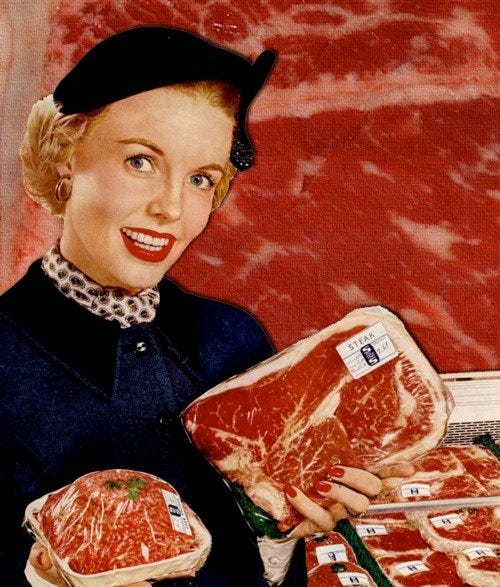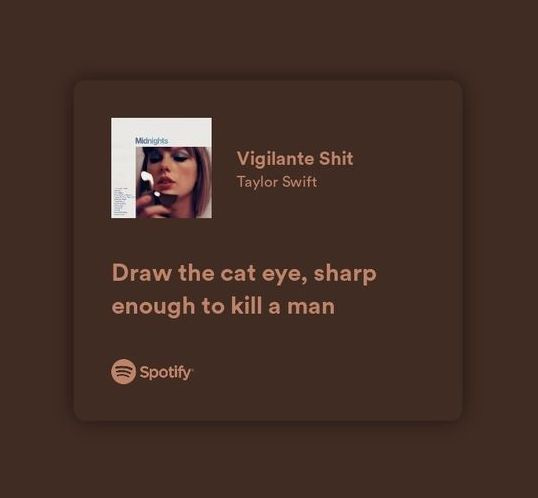Students Explain Things To Me
Meatfluencers. Lookmaxxers. ‘Unapproachable makeup.’ Digital trends move too fast for my millennial brain. Thankfully I have students to explain them to me.
You’re reading Wait, Really?, a newsletter unpacking what's in the culture, with a feminist spin. Want it in your inbox? Sign up below.
The rise of audio porn — whose primary consumers are women.
The fact that Google searches for “Am I a good person?” peaked last year.
Women quitting hormonal birth control, in part because of what they’ve been told about it on TikTok.
For the past three years, I’ve taught graduate journalism students how to “Report the Zeitgeist” — that is, how to identify and unravel the types of cultural stories that tell us something about the way we live now, in a world that is constantly changing.
Some of this work is political, like how the posters of kidnapped Israelis ignited a firestorm on American sidewalks. Other times it can become a parody of itself (tomato girl summer, anyone?). It almost always has an online component, and often, a name. Frequently I return home from teaching to smugly ask my husband, “do you know what [insert Gen Z TikTok trend] is?”
Part of the beauty of this kind of writing — which I’ve spent much of my own career doing — is that it is both prescient and ephemeral.
Sometimes, we’re identifying the kernels of a movement or an idea that will grown into something much larger. Other times, a subject that may feel like the most important thing one day — like, say, the rise of Second Life (remember that?), which I once wrote a Newsweek cover story about, calling it “the internet’s next big thing” 😂 — become a distant memory the next. Trends, and stories about those trends, repeat themselves, while others may contradict Others are so absurd in retrospect, like this 2003 New York Times story declaring Beyoncé “no Ashanti,” that all you can do is laugh.
We talk a lot in class about what even is a “trend,” the perils of cherrypicking to support one, and how they spread.
But this isn’t a lecture — mostly, I wanted to share with you a few of the phenomena my students wrote about this semester, because they are both fascinating and fun. From “Looksmaxxing” to “unapproachable makeup,” please allow the NYU graduate journalism class of 2024 to explain some things.
#1: ‘Looksmaxxing’
It’s always satisfying when a student identifies a phenomenon that ends up appearing (after them) in the New York Times. That was the case for “Looksmaxxing,” or “the act of altering one’s appearance in order to become more attractive” by extreme measures, then documenting those measures on TikTok. The trend seems to be particularly popular among teenage boys.
I had to ask, “Looks-whating?” approximately seven times during class, but as I learned when John submitted his story — which included many helpful diagrams — that looksmaxxing goes way beyond simple enhancements. We are talking extreme maximizing of looks: shaving down your teeth down for veneers, chewing jawline-enhancing gum (or doing “jawzrsize” for your face), deadlifting, and mewing. No, not meowing — this is mewing, a theory popularized by John and Mike Mew, which suggests that a lack of masculine definition in the jawline comes from an imbalance of the muscles of the face and neck. Mewing involves placing your tongue on the roof of the mouth and creating a suction by swallowing your saliva repeatedly, and is said to make the jaw grow squarer and stronger.
If it all sounds a little too good to be true, well, it definitely is, but that hasn’t stopped a variety of online dwellers from spewing its attributes. Like Dean Robertson, the founder of Looksmaxxing.com, who told John that “Attractive people are perceived as being more intelligent, trustworthy, healthier, sociable, and successful.” Not unlike beauty pageants, he explained, Looksmaxxers tend to be scored on their appearance. “The community I am cultivating … has a shared goal becoming the best version of themselves,” he says.
Please, do not try this at home.
John Kopp is the author of the looksmaxxing bible and a contributor to V Magazine and HighSnobiety. He is looking for a job in fashion journalism.
#2: The Rise of the ‘Carnivore Queens’
“I’ve been rubbing beef fat all over my face for a little over a year now, and it’s honestly been one of the best skincare decisions that I’ve ever made.” Those were the words of Jessalyn Randle, 32, who was dragging a piece of marbled meat along her cheekbone as if it were a gua sha stone.
Randle doesn’t merely slather red meat on her skin — she eats it. Two pounds per day, to be exact.
She’s a follower of the carnivore diet: a high-protein meal regimen that streamlines food intake to include only animal-based products, effectively eliminating most plant foods, sugars, and carbs. She documents much of this food journey on her Instagram, like the clip of her eating a pound of bratwurst dipped in sour cream and seasoned with cow organs, or the video of her sitting at a picnic table in Big Bear, Calif., her teeth cleaving through a slab of Kerrygold butter.
“I don’t always ignore government health advice, but when I do, I end up healthier,” reads the text overlaying her video.
This is the life of a meatfluencer — a specific subset of carnivores, many of them on TikTok, who not only adhere to the meat-heavy diet but also dedicate the bulk of their digital footprint to posting about it. But there’s one thing that makes from many of her meatfluencing peers, who boast names like Liver King, along with images of their Herculean muscles: She’s a woman.
Gabriella Ferrigine is a freelance journalist who has been published in the New York Times, Brooklyn, Lithium and West Side Spirit. She’s got 1,200 more words on female meatfluencers — any editors want to take a look?
#3: ‘Unapproachable Makeup’
Hila Baksay never set out to look “unapproachable,” she just wanted a night out. An artist in LA, she recently went with friends to a bar — expecting, maybe, to make some new ones. She experimented with her makeup that night, opting for a darker and heavier look — a sharp cat eye, smokey under eyeshadow, contour, and a bold lip.
She left the house feeling confident, soon noticed that no one tried talking to her. People seemed intimidated.
She didn’t think much of it, until she half-jokingly posted a video about the experience on TikTok, along with a tutorial of how she did her makeup. She used hashtag #unapproachable — and the unapproachable makeup movement was born.
Today, the #Unapproachable hashtag has garnered 75 million views, as women, in sharp black eyeliner and dramatic smokey eyes, their cheekbones sunken but defined, describe how the severity of the face paint makes them feel powerful — inducing some fear, but also some respect.
Baksay, too, has begun to see the appeal. She described her new “unapproachable” look like armor, or a safety net.
“Women —they go out, and they're getting approached by creepy dudes,” she said. “And so they want their look to be intimidating and unapproachable, so that guys will leave them alone.”
Sienna Estrada is a recent graduate of the cultural reporting and criticism program at NYU. A former campus DJ, she is looking for a job in reporting, copywriting or editing (and she is very approachable).
Thanks for reading! Stay tuned for more student work soon.






As a Gen x middle school teacher, I often have no idea what my students are talking about, but they explain it to me. Remembering life in my 20s, I can definitely see the appeal of unapproachable makeup.
Looksmaxxing is so funny to me. Girls and women have been obsessing over how to look better for generations (5 exercises for a bigger but, How to pick a swimsuit for your body shape, the entire make up industry) but as soon as men start trying to do the same thing it gets a special term and is news worthy.